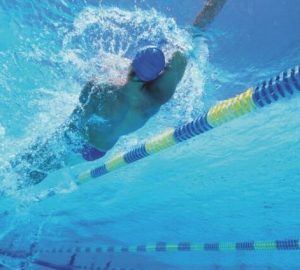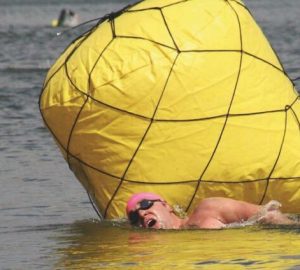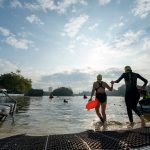A quick guide to pool training kit
We have all seen people training with paddles, fins, snorkels and floats, but what training aids should you be using in your pool sessions, how do you use them and most importantly – why?
Training aids can enhance, support and provide an excellent return on your training sessions – as long as you use the right equipment at the right time. Know what your kit does and what it should be used for!
When we tested a range of pool training kit in the January issue of Outdoor Swimmer, our main bugbear was the lack of product information on why swimmers should be using a particular piece of kit, and how to incorporate it into their training sessions. Kudos therefore to Finis for the technique-focussed kit with detailed information on its purpose.
You can train satisfactorily without any equipment, so don’t blow your budget thinking it’s a must. But training aids can improve fitness, technique and inject a bit of fun and variety into your sessions.
Paddle to perfection

Paddles predominantly provide increased resistance and are great for strength and speed training. They are also high rewards/ high risk: endless lengths in training with paddles could be doing you more harm than good, especially if you have technique flaws in your stroke. Don’t risk shoulder injury!
Swimming with paddles can pose an injury risk, so we recommend first having your stroke mechanics analysed by a coach to observe the catch and pull phases of your stroke and identify specific areas that require correction. Paddles should always be used with caution and removed if they cause any discomfort or pain. But judicious use of paddles can help identify and correct flaws in the catch and pull phase of your stroke.
Why should I use fins?

Fins increase the surface area of the foot, get the legs working and therefore increase heart rate. They can be used for providing stability during drills focussing on other areas of the stroke, speed work and kick development.
Kick and pull

A pull buoy isolates the legs and provides increased buoyancy. It helps focus on the upper body and is good for strength work. A pull buoy, however, can also be a trap. Don’t rely on a pull buoy if you are a sinky-legged swimmer, it will only hide the problem. You are better to work on the causes.
Use a kickboard with caution. Kicking with your head up takes you out of body position. Use a kickboard with a snorkel to work on kick while practising good body position.
Why use a snorkel?

By removing the need to turn your head to breathe, you can focus on other aspects of your swimming technique, such as your catch, balance and alignment.
Habitual breathing to one side can create imbalances in your stroke, so use a snorkel to improve symmetry in your front crawl.
Some snorkels come with extra smaller top holes for a harder workout.







